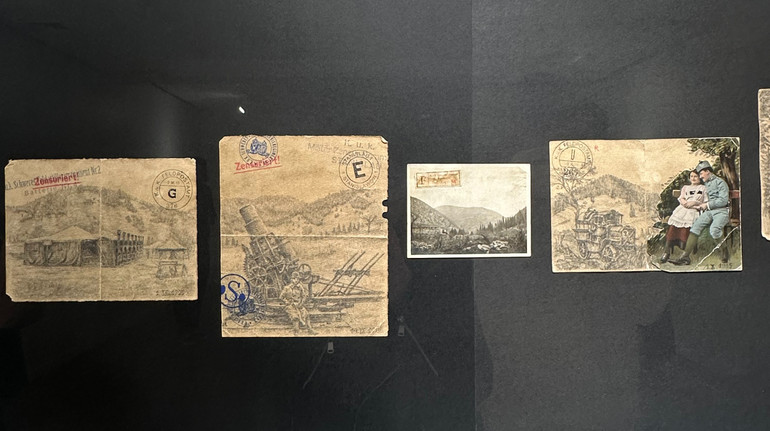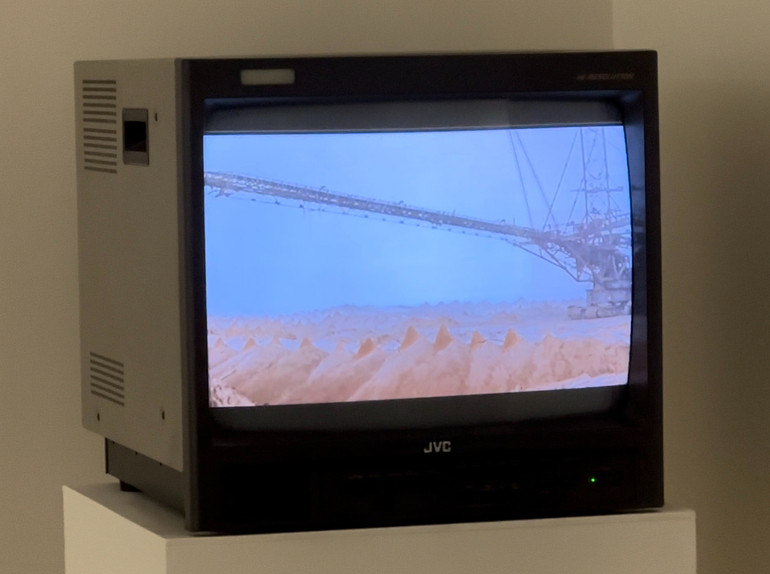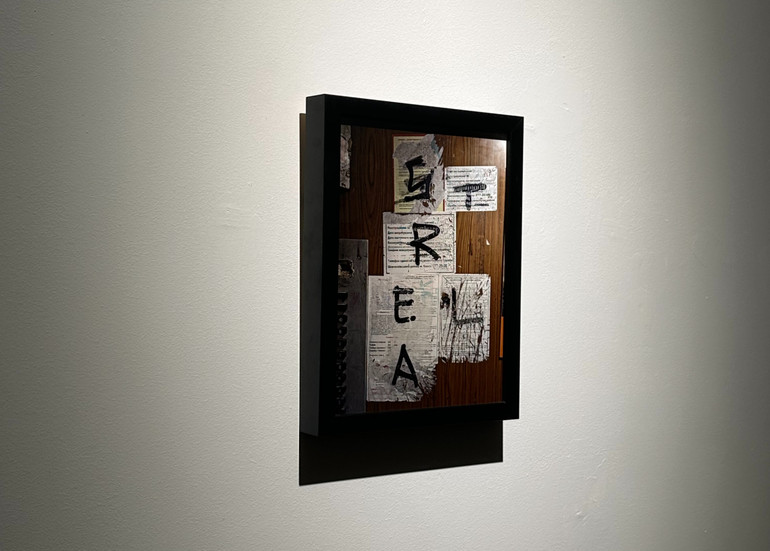The exhibition “Where is the night, where is the dream” at the Voloshyn Gallery
[ad_1]
“Where the night goes, there goes the dream” is a phrase that we used to say in childhood so that a bad dream would not come true. Modern military reality is becoming so terrible that after every shelling or loss, you also want to say “where night goes, there sleep” and, opening your eyes, see that everything is in order.
Instead, art has the opportunity to look at reality without fear. This is how modern artists work Daniil Revkovsky and Andriy Rachynskyi, which offer reflection on the future after the disaster. Their series of works “Tail Storage” began with reflections on human depletion of earth’s resources and turned into an imaginary museum of the demise of human civilization, where the authors reflect on how we destroy ourselves.
“Where the night goes, there is the dream” – a new series of “Tail Vaults”. UP Culture tells how the exhibition encourages us to think about the future and our collective responsibility for it.
Curator of the exhibition “Where is the night, where is the dream” Ksenia Malykh says that the preparation for it lasted half a year: “The practice of Daniil Revkovskyi and Andriy Rachinskyi is rooted in research work. And although they create historical fiction, this fiction is so well thought out and supported by archival materials that it could probably be reality.”.
At the same time, as a whole, this “research” lasted much longer. It all started with the “Tail Vault” (2021) – the first project of the “Museum of Human Civilization” created by Daniil and Andrii to reflect on why humanity destroyed itself, which became the reasons for this from the perspective of historical events in Ukraine.
At first, the artists talked about the exhaustion of the earth’s resources. In the next project – “Tail storage. Engineer” – about terror in Soviet Ukraine, dictators who can invent and implement these or those terrible experiments with the population. Next – “Step of Mickey Mouse”, which was a study of tank battles in the borders of Ukraine in 1991.
At first, the artists talked about the exhaustion of the earth’s resources
Olga Dudenko
At the new exhibition “Where Night, There and Sleep” Daniil Revkovsky summarizes the theme common to all projects: “The destruction of humanity is a complex of actions stretched across time and space, and there is no easy answer about the reasons for its demise.”
According to the artists,and we are all in conditions of total destruction, we will all talk about it, and this will happen constantly. So we find ourselves in a space where it is not so much time that counts, but reflections on it, what we leave behind.
The first ones at the exhibition are old drawings and postcards placed under glass frames. They are based on the story of a soldier of the First World War, fragmentarily revealed in images of military landscapes, inscriptions, ciphers, seals.
On the surface of the landscapes, photos of a military man and his wife are juxtaposed here and there, and this seems to be an attempt to think about the desired future, using the evidence of the past. Some postcards have the inscription Zensuriert (censored) – this means that the letter did not reach the addressee, something was lost and kept silent.
In their “Museum of Human Civilization”, Revkovsky and Rachinsky are in the future, which, according to Ksenia Malykh, “allows artists to acquire a museum-like, retrospective distance, even when they talk about our time”. History is made every second, but it is distance that becomes necessary in order to understand and experience it.

Pictures-stories of soldiers of the First World War
Olga Dudenko
Even when talking about the First or Second World War, artists think about the modern war:
Many Soviet-made missiles are flying at us. For example, the X-22 missile was made to destroy aircraft carriers of the US fleet with nuclear warheads, now it is used for mass murder of the population of Ukraine. And I wonder what people who are tangential to this in the past think now
Daniil Revkovsky
The following work is directly related to current circumstances. This is a photo from an elevator where the word STRELA is written in letters on the announcements. The pasted images are scratched – war, shelling become everyday, a way of life in which you try to move on. And no one is safe from getting the key to the apartment and starting to scratch their anger on the ads.
In war conditions, you never remain the previous one, and even without experiencing physical losses, you feel internal ones. Destruction produces other destruction.
We go down a step below and see a video robot with a deserted landscape. In a few seconds, snow will fall on the ground captured by the camera. Ksenia Malykh comments: “The video work is a kind of abstract commentary, it conveys a sense of anxiety that unites the rest of the works.”
Perhaps landscapes, even when remote and silent, always hold the stories of the people who were there, and this emptiness and loneliness is theirs, and the earth is the reservoir for such memory.
The last three works at the exhibition are collage paintings in which wartime reality intersects with, at first glance, peaceful life. The depicted Kh-22, Tochka-U and R-36M are names that meant nothing to most of us before, now they become a full-fledged part of our everyday life and take away what is important and dear to us.

Artists use multimedia techniques for their exposition
Olga Dudenko
The plot of these works arises from the dreams of Klavdia Chervonyk, a fictional character who supposedly worked at the Southern Machine-Building Plant in Dnipro. The woman received internal parts for intercontinental ballistic missiles and sometimes went on business trips to other factories for their production. Daniil Revkovsky says:
“She was an ideological communist and up to a certain point was proud of her work. In the period from April 7, 1980, until her suicide on August 5, 1988, every day she had a dream with a similar plot: “a garden near the house, on which PMZ products that she adopted for service fall, the development of other enterprises of the defense complex of the USSR”. In the period from June 17, 1980 to November 25, 1982, Klavdia makes a picture of this dream every day. We were inspired by the investigation of the “Toronto Television” project about women’s surnames on details, both Soviet and and Russian missiles”.
Responsibility catches up in the post-war period, and Klaudia sees rockets crashing into her garden in a peaceful life. Even if you are not involved in the production of rockets or receiving their parts, there are many triggers in your future – from a loud sound, bad dreams, new phrases that have appeared in everyday speech, the question “how are you?”.

The transition from the past to the present in the exhibition
Olga Dudenko
In space, we move from the First World War to the present, and all this is combined into one disturbing foreboding. With each job, the anxiety builds and erases any time frame, which becomes nothing more than a convention. War and death is the point at which humanity will sooner or later find itself, the question is to still be able to talk about the future in such a reality – the possibility of our continuation and continuation.
“We quickly realized that art cannot influence historical events, it is rather a reflection on the future”– summarize Revkovskyi and Rachinskyi.
At the same time, “Where is the night, there is a dream” once again confirms how important it is to talk about the war, even without having a significant time distance from the events. Daniil Revkovskyi and Andriy Rachinskyi add: “We think about Kharkiv, the destruction of the past and the future, and the genocide. It seems important to say something about it in the future.”.
There is a lot of future in the past, and a lot of the past in the future. It is as if we are never fixed in time, but are always somewhere outside ourselves, but such a process is made possible only by our presence here and now. And next to us, people – far and near – disappear and are born, smile and cry, think about the future.
[ad_2]
Original Source Link











